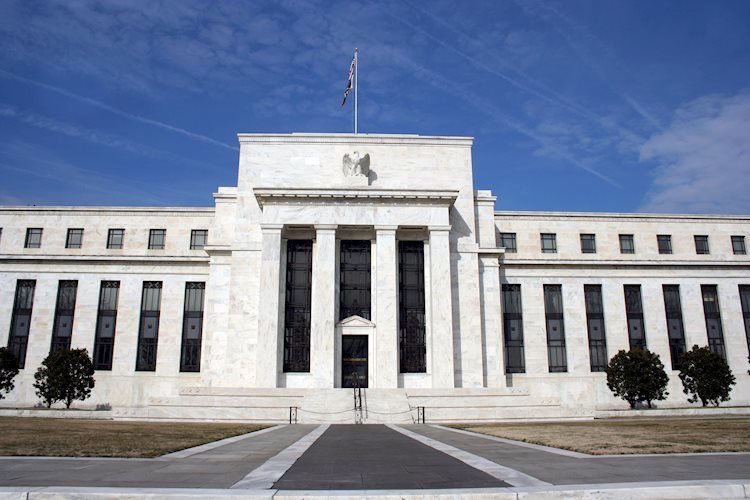The USD is also registering gains following Wednesday’s relatively hawkish FOMC minutes.
The odds of a cut in September continue to decline.
The US Dollar Index (DXY) is currently trading at 104.90, modestly higher, and managed to clear all its daily losses. This upward trajectory is driven by robust S&P surveys known as the Purchasing Managers Index (PMI) and encouraging weekly Jobless Claims figures, both indicative of a healthier US economy.
The US economy displays strength, and the Fed’s cautious approach keeps the Greenback afloat. Next week’s US Personal Consumption Expenditures (PCE) figures for April will determine the short-term trajectory.
S&P Global Manufacturing PMI for the US increased to 50.9 in May, up on a monthly basis from 50.0 in April, surpassing economists’ forecast of 50.0.
Service sector PMI rose to 54.8 from 51.3 in the previous month, exceeding the prediction of 51.3 on a monthly basis.
Composite PMI for May was reported at 54.4, a significant leap on a monthly basis from 51.3 in April, and surpassed the anticipated decline to 51.1.
US Department of Labor reports 215K employment insurance beneficiaries in the week ending May 18, lower than the estimated 220K and the prior week’s figure of 223K, implying a resilient labor market.
Fed maintains a reserved approach toward monetary policy alterations while advocating for continued patience before starting cutting.
Odds of a cut in the September meeting declined below 40%, according to the CME FedWatch Tool.
The indicators on the daily chart reflect a sort of stalemate between bullish and bearish perspectives. Despite the bears working to gain ground, the index remains above the 100 and 200-day Simple Moving Averages (SMAs), a strong testament to the presence and resiliency of buying momentum. However, the Relative Strength Index (RSI) flirting with negative territory suggests that a bearish pinch may be on the way.
Moreover, the Moving Average Convergence Divergence (MACD) presents flat red bars, a neutral to bearish sign that could indicate a potential shift in momentum or continued sideways movement.
Inflation measures the rise in the price of a representative basket of goods and services. Headline inflation is usually expressed as a percentage change on a month-on-month (MoM) and year-on-year (YoY) basis. Core inflation excludes more volatile elements such as food and fuel which can fluctuate because of geopolitical and seasonal factors. Core inflation is the figure economists focus on and is the level targeted by central banks, which are mandated to keep inflation at a manageable level, usually around 2%.
The Consumer Price Index (CPI) measures the change in prices of a basket of goods and services over a period of time. It is usually expressed as a percentage change on a month-on-month (MoM) and year-on-year (YoY) basis. Core CPI is the figure targeted by central banks as it excludes volatile food and fuel inputs. When Core CPI rises above 2% it usually results in higher interest rates and vice versa when it falls below 2%. Since higher interest rates are positive for a currency, higher inflation usually results in a stronger currency. The opposite is true when inflation falls.
Although it may seem counter-intuitive, high inflation in a country pushes up the value of its currency and vice versa for lower inflation. This is because the central bank will normally raise interest rates to combat the higher inflation, which attract more global capital inflows from investors looking for a lucrative place to park their money.
Formerly, Gold was the asset investors turned to in times of high inflation because it preserved its value, and whilst investors will often still buy Gold for its safe-haven properties in times of extreme market turmoil, this is not the case most of the time. This is because when inflation is high, central banks will put up interest rates to combat it. Higher interest rates are negative for Gold because they increase the opportunity-cost of holding Gold vis-a-vis an interest-bearing asset or placing the money in a cash deposit account. On the flipside, lower inflation tends to be positive for Gold as it brings interest rates down, making the bright metal a more viable investment alternative.
Share:
Feed news
Information on these pages contains forward-looking statements that involve risks and uncertainties. Markets and instruments profiled on this page are for informational purposes only and should not in any way come across as a recommendation to buy or sell in these assets. You should do your own thorough research before making any investment decisions. FXStreet does not in any way guarantee that this information is free from mistakes, errors, or material misstatements. It also does not guarantee that this information is of a timely nature. Investing in Open Markets involves a great deal of risk, including the loss of all or a portion of your investment, as well as emotional distress. All risks, losses and costs associated with investing, including total loss of principal, are your responsibility. The views and opinions expressed in this article are those of the authors and do not necessarily reflect the official policy or position of FXStreet nor its advertisers. The author will not be held responsible for information that is found at the end of links posted on this page.
If not otherwise explicitly mentioned in the body of the article, at the time of writing, the author has no position in any stock mentioned in this article and no business relationship with any company mentioned. The author has not received compensation for writing this article, other than from FXStreet.
FXStreet and the author do not provide personalized recommendations. The author makes no representations as to the accuracy, completeness, or suitability of this information. FXStreet and the author will not be liable for any errors, omissions or any losses, injuries or damages arising from this information and its display or use. Errors and omissions excepted.
The author and FXStreet are not registered investment advisors and nothing in this article is intended to be investment advice.





